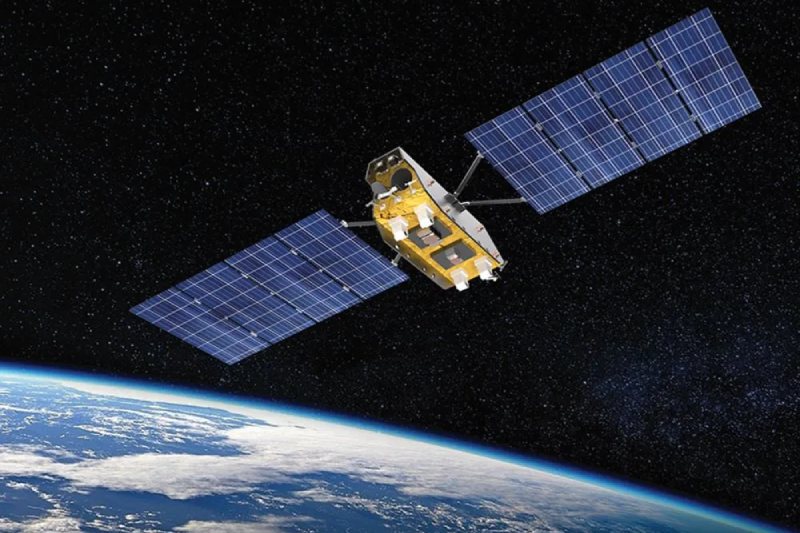
Canada Raises Its Investment In Telesat Lightspeed
- Business
- April 2, 2024
In order to assist flagship geostationary operator Telesat in financing its Lightspeed low Earth orbit (LEO) broadband constellation, Canada is willing to contribute 50% more than originally estimated.
Nearly half of the $3.5 billion budget for the 198-satellite network, or $2.14 billion, is to be borrowed for Lightspeed, according to a letter Telesat obtained from the Canadian government this week.
The agreement also calls for the government to trade warrants in order to purchase 10% of Lightspeed for $300 million, valuing the constellation at $3 billion before SpaceX launches its first satellites in 2026.
The transaction replaces a preliminary 1.44 billion Canadian dollar investment agreement that was agreed in August 2021 and included an upfront preferred equity payment of 650 million Canadian dollars together with a loan of 790 million dollars.
The previous plan called for an interest rate fixed at 2% per year for the new loan, but it would now have a floating rate of 4.75% over the Canadian Overnight Repo Rate Average (CORRA). Additionally, Telesat would only have 15 years—as opposed to 20—to repay the loan.
According to Telesat, as of April 1, the proposed investment is still contingent upon a number of factors, such as final documentation and the government’s satisfaction with other funding sources being considered for the satellites that MDA, a Canadian company, is creating.
The agreement follows Telesat’s August manufacturer transfer due to production delays at Thales Alenia Space in Europe.
The MDA satellites guarantee the same performance but weigh 75% less, saving the operator $2 billion over Lightspeed’s initial budget.
On April 1, Telesat CEO Dan Goldberg announced that the government investment will also enable the company to reduce its borrowing expenses by $750 million.
Export credit agencies (ECAs) in France and Canada were reportedly planning to lend the business roughly $3 billion in total for Lightspeed, in addition to Canadian federal and provincial finance pledges, according to Stephen Hampton, Telesat’s senior director for government affairs and public policy.
While Telesat does not require funding from France’s ECA due to the constellation’s reduced cost, the enhanced federal support from Canada effectively replaces the investment required from Canada’s ECA.
“The [government of Canada] is willing to do this in part because, by working with MDA, we’re making a much more significant investment in Canada and having so much more of a positive impact on the Canadian space ecosystem versus the prior approach we were taking,” Hampton told SpaceNews via email.
He added that there are ongoing talks with provincial government partners on investment in the constellation, and that the operator still intends to use Telesat stock to cover around $1.6 billion of Lightspeed’s expenditures.
After accounting for fluctuations in foreign exchange rates, Telesat’s 2023 revenue of 704 million Canadian dollars was announced, a 9% decrease from the previous year.
During a March 28 earnings call with investors, Goldberg mentioned a general fall in satellite TV sales across the sector, which he predicted would continue to hurt revenues in 2024.
According to him, Telesat is also ready for increased competition from SpaceX’s Starlink LEO broadband constellation in the enterprise connectivity market, especially in the maritime sector.
“The biggest driver of lost revenue in the enterprise segment is the migration of customer requirements from [geostationary orbit] to LEO — namely to Starlink as they are the first in the market,” Goldberg said.
“Enterprise customers want affordable, low-latency broadband connectivity, which we’ve been talking about for quite some time. The transition to LEO is happening a little faster than even we expected. Although we don’t love seeing Starlink cannibalize some of our GEO customer requirements, it’s a strong validation of the market embrace of LEO and the compelling path that we’re on with Telesat Lightspeed.”
In 2024, Telesat projects its income to range from 545 million to 565 million Canadian dollars.
Earnings before interest, taxes, depreciation, and amortization, or adjusted EBITDA, decreased by 8% from the previous year to $534 million in Canadian dollars in 2023.
Telesat projects adjusted EBITDA of between 340 million and 360 million Canadian dollars for 2024, as Lightspeed expenses increase this year.